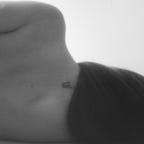Admired Photographers: Henri Cartier-Bresson
Last month I started a new series in which I aimed to write a short introduction to some of my most admired photographers, both historical and contemporary. The first episode was about the unknown-until-her-death street photographer Vivian Maier so I would like to continue with who is considered the father of street photography as a style and genre in itself, borrowing from documentary and photojournalism: Henri Cartier-Bresson. His work has influenced thousands of photographers throughout the XX Century, and I was no exception.
To take a photograph is to align the head, the eye and the heart. It’s a way of life — Henri Cartier-Bresson
Henri Cartier-Bresson was a French photographer born the 22 August 1908 in Chanteloup, France. He studied painting and then discovered photography as a form of artistic expression, getting his first camera, a Leica, in 1932; starting his career as a photographer by documenting life across Europe and Mexico and exhibiting his work in New York and Madrid before the Second World War¹.
After the war, in which he was a prisoner, Henri Cartier-Bresson, alongside photojournalists Robert Capa, George Rodger, David Seymour, and William Vandivert; founded the prestigious and renowned photography agency Magnum Photos in 1947², a cornerstone for photojournalism worldwide that lasts to our days. From then on until his death on 3 August 2004, he dedicated his life to the promotion of photography as a medium to depict the reality in which we live, employing other artistic mediums such as film, painting, and book publishing.
For me, Henri Cartier-Bresson was a source of inspiration from the beginning, his work becoming an essential guide into my understanding and execution of street photography to show the world as I see it through the camera lens. His work was especially influential in the development of my series Europa, traveling around countries of the European Union to shoot life as it unfolded in front of me without interference, enhancing the natural behavior of human beings in urban environments as a form of aesthetics.
